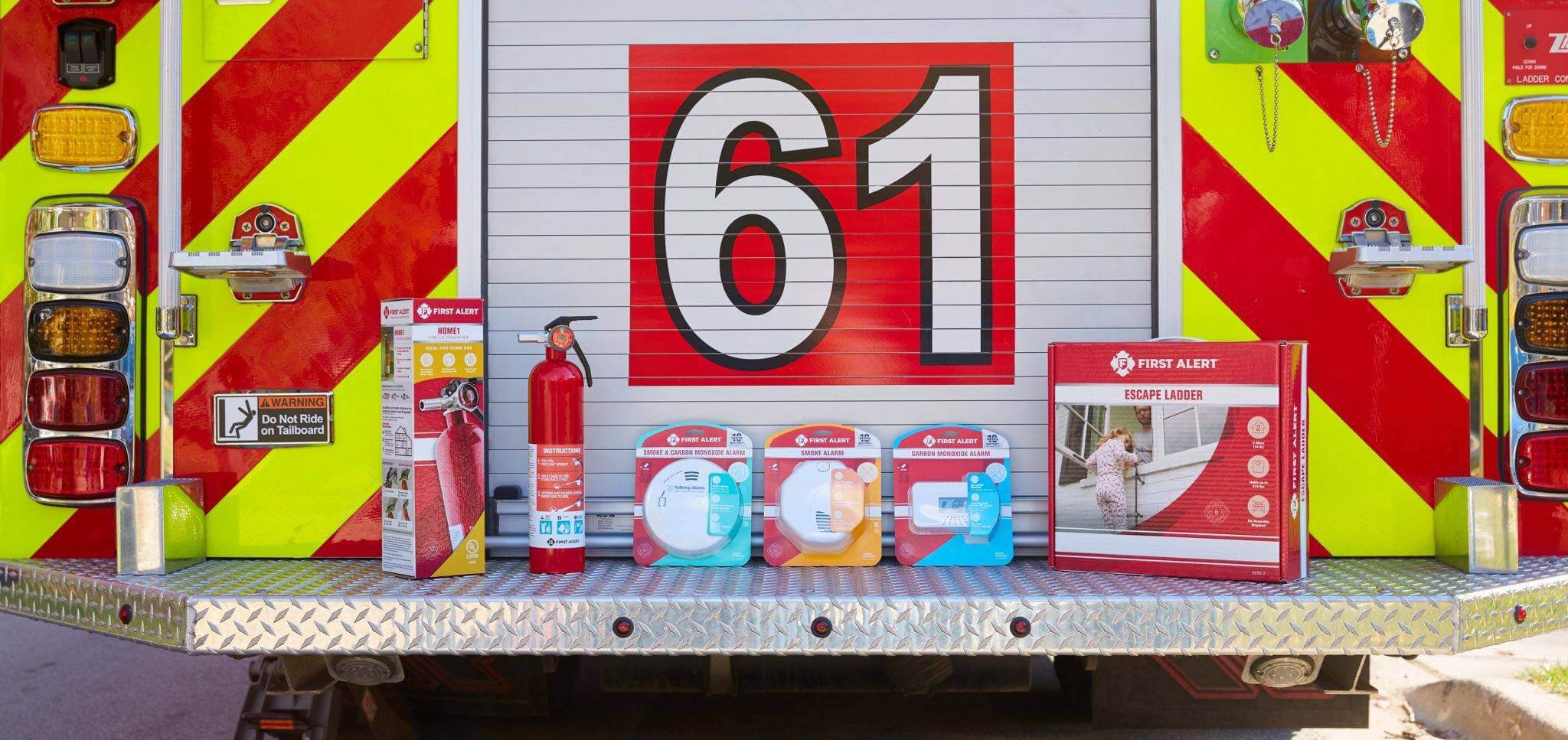Fire Safety Equipment to Keep in Your Home

When it comes to fire safety, being prepared is your first line of defense . A huge part of being prepared for an emergency is having the proper fire safety equipment installed in your home. Doing so will also help provide you and your family with peace of mind. Learn more about the types of fire safety equipment that are essential to help protect your home and family. Once you have your safety devices and fire protection equipment, use our whole home safety checklist to practice fire and carbon monoxide safety with your family.
Carbon Monoxide Alarms
Carbon monoxide (CO) is an odorless, colorless and tasteless gas. It is produced any time that you burn fuel such as lighting a grill, using a fireplace, turning on a gas range, using a furnace and more. If too much carbon monoxide builds up inside of your home, it can result in carbon monoxide poisoning. Inhaling too much carbon monoxide can have devastating effects, so it is important to have multiple carbon monoxide alarms to alert you to elevated levels of carbon monoxide. CO alarms should be installed on every level of your home, as well as outside each sleeping area and inside every bedroom for whole home protection.
Smoke Detectors
Smoke alarms are essential in detecting fires to give you and your family an early warning. Installing the proper number of smoke detectors can make all of the difference in the safety for you and your family. Make sure that you have a working smoke alarm installed on every level of your home, as well as outside of any sleeping areas and inside every bedroom. You should also test that your smoke and CO alarms are working at least once per month and change the alarm batteries every six months.
Fire Extinguishers
Fire extinguishers play a vital role in fire safety protection. If a fire erupts in your home and you catch it in an early stage, you can opt to use a fire extinguisher to put it out. Fire extinguishers should only be used on small fires. You should also only use one if you are educated on how to operate one and are using the proper type of extinguisher for the type of fire. Keep fire extinguishers on every level of your home, as well as in the kitchen and garage.
Fire Escape Ladders
Escape ladders can help you evacuate your home in the case of an emergency if your primary escape route is blocked. They are especially ideal for safely evacuating from a second or third-story building. Plus, they are collapsible, so they are easy to discreetly store. Keep escape ladders inside each bedroom on the upper level(s) of your home so they are easily accessible in the event of a fire emergency.